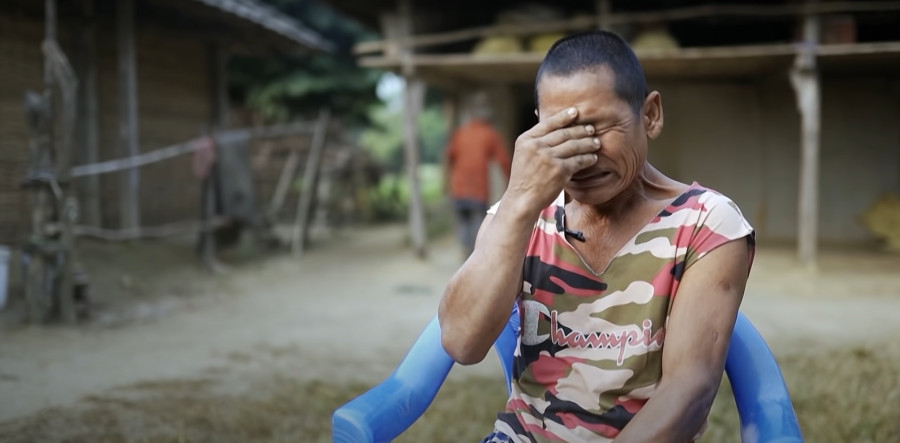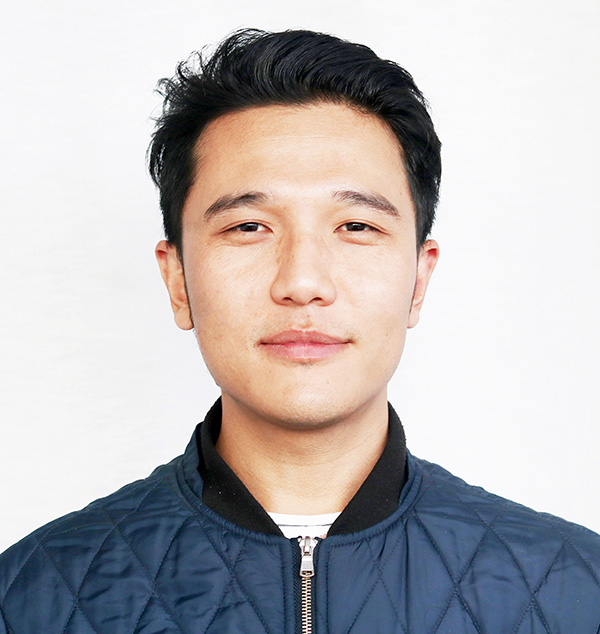Culture & Lifestyle
Ainaa—mirroring our society
Launched in January, Ainaa, a social reality TV show, highlights Nepal’s many social issues.
Tsering Ngodup Lama
At the 14 minute and 55 second mark of the first episode of Ainaa, a social reality TV show, a wailing Dev Narayan Rasaily tries to explain, with great difficulty, how he desperately went looking for his nine-year-old daughter Reshma the morning she went missing.
A day later, her body was found in a nearby farm, and a post mortem report revealed that she was raped and subsequently murdered. This heart-rending incident occurred in Hariharpur village of Mithila Municipality in 2019.
As the episode unravels, viewers see Rasaily’s grief—raw and deep—and the immense sense of loss he still carries in his heart.
Apart from Rasaily, the episode features four other people—a young parent from Mahottari whose eight-month-old daughter was raped and murdered in 2018; a mother from Kathmandu whose 13-year-old daughter was raped and murdered in 2017; and another mother from Kanchanpur whose 13-year-old daughter also suffered the same fate in 2018.
In the last few years, Nepal has seen a rise in rape and murder cases of minor girls and Ainaa’s first episode explores this disturbing reality through the stories of the victims’ families.
The episode first aired on Kantipur Television in January and was also uploaded on Ainaa’s YouTube channel. The episode has already been viewed more than 600,000 times. So far, Ainaa has already released 14 episodes, covering a wide range of social issues from dowry system, acid attack to caste- and gender-based discrimination and violence. The show’s average views per episode is nearly a quarter million.
These numbers are especially impressive considering the episodes’ lengthy runtime. At 55 minutes, the first episode has the shortest runtime, and the rest of the 13 episodes are all more than an hour long.
Ainaa’s popularity, says its project head Radha Krishna Dhital, has made it evident that there is a viewership for well-researched and -produced shows that highlight social issues.
When asked what prompted him to make a TV show on social issues when there is a huge demand for competition-based reality TV shows in the country, Dhital says it was his deep interest in understanding the Nepali society and the country’s changing media landscape that got him to make Ainaa.
Dhital has spent the last four years focusing on video production and acquiring all the required training and knowledge to make a show like Ainaa.
“But before that I worked as a journalist for 15 years and journalism gave me a wide understanding of the society we live in and the many social issues that exist. When I quit journalism to focus on video production, I travelled extensively within the country to get a better understanding of our society and also made a lot of social documentaries and experimented with different types of visual storytelling styles,” said Dhital.
In the final years of Dhital’s journalism career, he saw that the country’s media landscape was changing rapidly.
“Digital media had taken off but the majority of content that was gaining traction and getting widely shared were sensational in nature and lacked depth and nuance,” said Dhital. “I strongly felt viewers deserve shows with quality and substantial content.”
Given the kind of response Ainaa has received so far, Dhital says he has been proven right.
Many viewers of Ainaa have also mentioned how similar the show is to Satyamev Jayate, an Indian TV show about social issues plaguing the country, which was hosted by Bollywood actor Aamir Khan.
Dhital says the similarities are no accident.
“Ainaa is hugely inspired by Satyamev Jayate. In fact, I even travelled to India and met with the makers of the show to better understand the show’s production process and what I learned there helped me a lot during the making of Ainaa,” said Dhital.
While Satyamev Jayate had the popular Bollywood actor Aamir Khan as the host, Ainaa is hosted by a relatively unknown face Bishwa Prakash Sharma, a career politician and spokesperson of Nepali Congress. This unconventional choice for the show’s host caught many by surprise.
“Before we approached Bishwa Prakash Sharma to host the show, we explored other options, which included popular personalities. But things didn’t work out with them. And when we decided to go with Sharma, even many in the team were very sceptical about how he would perform,” said Dhital. “Getting Sharma to host the show was a big gamble and it paid off.”
While many know Sharma as a politician, very few know that he also has years of experience working in the media.
“I have worked as a radio host and an editor at a weekly magazine for many years,” said Sharma. “And as a politician, public speaking is an area I am very familiar with. The combination of these two experiences has helped me a great deal in my role as a TV show host.”
But what is it like for a politician of Sharma’s stature to host a social issue-driven TV show?
“It has been a great learning experience for me. After taking the responsibility of hosting this show, my understanding of our society and the wide spectrum of issues that exists in it has deepened,” said Sharma. “I have always believed social transformation is a must for Nepal to become truly prosperous and without it no amount of economic development can bring real prosperity for each and every citizen. And after hosting the show, this belief has been reaffirmed.”
The makers of Ainaa agree that one of the main reasons the show has been received so well is because of the content, for which the team, says Dhital, has worked very hard by putting in hours and hours of research in the making of each and every episode.
“Given the nature and sensitivity of issues Ainaa covers, the team was very clear from the beginning that research was going to be a very important component of the show,” said Prakash Lamichhane, Ainaa’s research head. “We created a solid research team and that has enabled us to do a lot of ground reporting and rigorous fact-checking.”
Once the team decides on an issue, Lamichhane says the research team starts finding characters.
“We have an extensive network of journalists and social activists spread across the country and they help us in finding stories and characters related to the issue,” said Lamichhane. “The characters' stories are then cross-checked and verified. We also do extensive research on all that has happened and is happening on the policy level of the issue.”
According to Lamichhane, the objective of Ainaa is to show the issues through the victims' perspective and the society and the government’s attitude towards them.
“This has allowed us to tell stories that viewers can empathise with,” said Lamichanne. “And that I think has made all the difference. To bring social transformation, it is imperative that the public believe strongly that such changes are needed and that’s where empathy comes in.”
Lamichanne laments that research isn’t an area that many consider important and hence refuse to invest resources on it.
“But the impact Ainaa has already managed to create has shown the importance of research and we hope it will help change the way the industry looks at research,” said Lamichhane.
The makers of the show say that they are under no illusion that a single show like Ainaa will transform the society.
“Eradicating many of the social ills that exist in our society is a huge task and Ainaa’s mission has never been to change society but to serve as a catalyst to start a movement involving the general public and the policy makers and question why things are the way they are,” said Dhital. “And the kind of response that we have gotten so far from the general public and the government and non-government stakeholders in the society shows that we have set the ball rolling in the right direction. And that is what matters to us.”




 13.12°C Kathmandu
13.12°C Kathmandu















